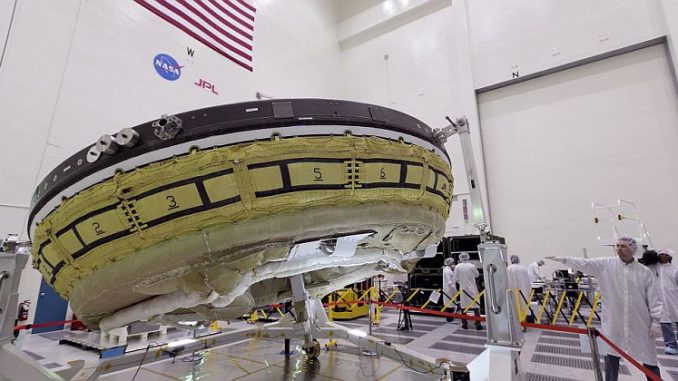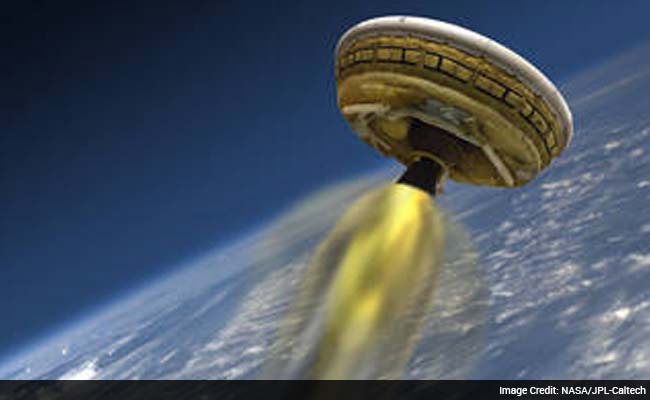
NASA is set to test its revolutionary ‘Flying Saucer’ technology on Tuesday. The low-density supersonic decelerator (LDSD) will launch from the U.S. Navy’s Pacific Missile Range Facility in Kauai, Hawaii at around 1:30 PM local time.
The test flight is expected to last for two hours and NASA scientists are hopeful the success would make a breakthrough in landing technologies for future Mars missions. Depending on weather conditions, the test flight should carry the LDSD to an altitude of 120,000 feet at the initial stages. The 7,000-pound saucer-shaped vehicle will be carried by a huge balloon the size of three football fields.

BYPASS THE CENSORS
Sign up to get unfiltered news delivered straight to your inbox.
You can unsubscribe any time. By subscribing you agree to our Terms of Use
Latest Video
After the initial stage, the 15-foot wide ‘flying saucer’ will be released and a booster rocket will propel the saucer at Mach 4, four times the speed of sound, to a height of 180,000 feet.
NDTV reports:
The tracking cameras NASA has employed for the test are expected to keep the balloon and test vehicle in their sights for about 30 minutes after launch, the US space agency said in a statement.
After reaching a height of 180,000 feet, a doughnut-shaped airbag will inflate around the saucer for its descent to earth.
The saucer is expected to splash down in the Pacific Ocean about two hours and 15 minutes after launch.
“The test is centred on how our newly-designed supersonic parachute will perform. We think we have a great design ready for the challenge, but the proof is in the pudding and the pudding will be made live for everyone to see,” said Mark Adler, project manager for LDSD at NASA’s Jet Propulsion Laboratory in Pasadena, California.
In order to support a human mission to the Red Planet, NASA needs technologies capable of landing between 20 to 30 metric tonnes on the Martian surface.
The LDSD supports payloads of two to three tonnes, doubling the current capabilities.
During the test flight, viewers will see live, low-resolution images from high over the Pacific Ocean off the west coast of Kauai, Hawaii.
Four cameras aboard the test vehicle will provide the LDSD mission team with different perspectives on the test.
The LDSD mission will test breakthrough technologies that will enable large payloads to be safely landed on the surface of Mars, and also will allow access to more of the planet’s surface by enabling landings at higher-altitude sites


